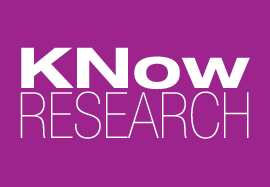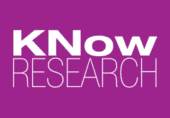What You Should Know Before Moving an In-Person Research Project Online
In recent weeks, the research industry has faced some difficult challenges. Many of our friends and clients are finding themselves juggling competing priorities in the face of great uncertainty. With the recent developments of the Coronavirus, many of our clients are shifting their in-person qualitative work online. Over the past few weeks, we have successfully and seamlessly moved many in-person projects online. Feel free to watch a bit on how to do so on the recent Insights Association webinar with our President Katrina and read the follow-up piece on How to Leverage Digital Qualitative Research.
Our goal with digital qualitative is two-fold
1. Keep projects moving forward when being there in person is not an option these days
2. Remind the community that #digitalqual is a project design option no matter when the research takes place. There are some advantages of taking studies digital that your team can reap the benefits of during and after the current crisis.
If you’re looking for a digital solution that still delivers on the deep, human understanding that qual research provides, there are a variety of qualitative digital methodologies available. And these digital options are endlessly flexible! Consider remote interviews, groups, digital diaries, online bulletin boards, co-creation sessions, mobile ethnographies to gather deep, focused insights on your brand or category.
The first design decision is between two digital qualitative approaches – asynchronous and synchronous. (And remember, you can combine both methods in one project for even deeper learnings!)
#1: Asynchronous Qualitative happens over time. It allows the researcher to interact with participants over a period of time, allowing them to log it at times that are convenient for them. This is especially appreciated these days when juggling working from home, home schooling and dueling streaming times are hitting every household!
- How it works: Researchers log on regularly to a platform, during the length of the project to read through new responses, monitor participation, address notes left by clients, send follow up questions to respondents, and analyze data. Remember, give participants super specific instructions and set reasonable expectations so they know what is required of them and when all throughout the project!
- Timing note: Know that managing/moderating/analyzing this type of study will take 1 person about 5-6 hours per day. And that’s not including the analysis on the back end when you have photos, videos, heatmaps, card sorts, rankings, ratings and verbatims to work with!
#2 Synchronous. Qualitative happens in real-time. The researcher and participants interact at the same time, similar to in-person qual, except remote.
- How it works: Researchers and participants log into a platform that allows for audio, text and/or video connections.
- Techniques: Review your toolbox of qualitative techniques. Make plans for how to bring your projective techniques, set up silent auctions, break your group into teams and debate. The tools are out there so explore your options and practice, practice, practice so you can replicate live group discussion techniques!
With both Asynchronous and Synchronous project design, think of the intrinsic benefits of #digitalqual!
- Reduced time, travel, and cost
- Engage hard-to-reach audiences
- No geographic restrictions for your recruit
- Virtual backrooms available for client–moderator conversations throughout the project
- Ability to share and gain insights via robust stimuli options, including live polls, dynamic imagery, etc.
- Ability to see participants’ environments (both on their device and in their home)
Still can’t choose? Consider combining synchronous with asynchronous activities is also an option. Within one project, you can set up a live group discussion, and then ask people to complete a bulletin board activity in their free time as a follow up. Or build a pre-exercise on the topic on a diary tool and select which participants to invite to a live interview based on their responses. Hybrid project design gives participants more time to complete media-rich activities like uploading photos or videos!
KNow’s tips to maximize #digitalqual engagement and success:
- Rescreen participants; it’s an additional opportunity to build rapport and set study expectations and do tech checks ass needed
- Stay on top of project management – don’t let anything slip through the cracks!
- Be diligent in daily moderating, monitoring, and analyzing
- Provide daily updates with excerpts of the best responses and respondent clips to listen to keep them in the loop
- Over-recruit: Just like you would for in-person studies over-recruit by 10% to 20% to make you we have the desired number of completes. Attrition rates will vary per study based on the study topics and the activities or length of the study. Note that if you’re doing a longitudinal Asynchronous project be prepared to do a ‘refresh’ recruit to add new sample to the study as needed along the way. Want to learn more about longitudinal qual? Check out: Longitudinal Research: 3 Key Roles Keep it Light
- And remember that moderation style needs to shift to the digital world, be sure to call on participants by name, practice showing stimulus, and get a research buddy! A notetaker/assistant is a lifesaver to support the moderator.
The team at KNow has a strong background in both qualitative and quantitative research methods and have been executing digital qualitative methodologies since 2007. We can help design your study so that your participants stays on track while exploring different avenues, make recommendations about which question types work best, or which areas should be left open for discussion.
Our hope is that the current health concerns will be laid to rest quickly, and the researchers who specialize in face to face research can go back to their normal routines. In the meantime, we can help you conduct your studies online, so your projects stay on track, and you get the insights they need.
While you’re at it, be sure you’re working remotely effectively! Check out 4 Remote Work Strategies to improve your work and your research by our Research Manager Sonya.

